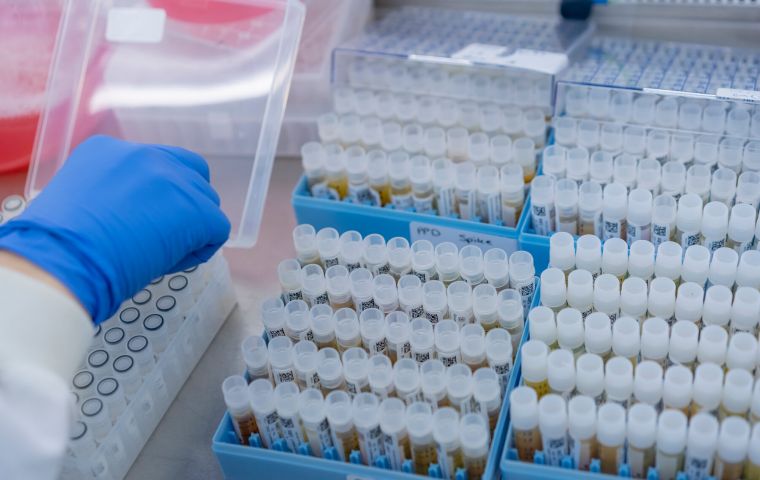MercoPress. South Atlantic News Agency
AstraZeneca faces tricky questions about its success rate as “vaccine for the world”
 Several scientists have raised doubts about the robustness of results showing the shot was 90% effective in a sub-group of trial participants who, by error initially
Several scientists have raised doubts about the robustness of results showing the shot was 90% effective in a sub-group of trial participants who, by error initially Days after grabbing headlines with its COVID-19 “vaccine for the world”, AstraZeneca is facing tricky questions about its success rate that some experts say could hinder its chances of getting speedy U.S. and EU regulatory approval.
Several scientists have raised doubts about the robustness of results showing the shot was 90% effective in a sub-group of trial participants who, by error initially, received a half dose followed by a full dose.
“All we have to go on is a limited data release,” said Peter Openshaw, a professor of experimental medicine at Imperial College London. “We have to wait for the full data and to see how the regulators view the results,” he said, adding that U.S. and European regulators “might possibly take a different view” from each other.
British drug maker AstraZeneca said on Monday that its experimental vaccine, developed with Oxford University, prevented on average 70% of COVID-19 cases in late-stage trials in Britain and Brazil. While the success rate was 90% in the sub-group of volunteers, the efficacy was 62% if the full dose was given twice, as it was for most participants.
That is well above the 50% efficacy required by U.S. regulators. Europe’s drug regulator has said it will not set a minimum level of efficacy for potential vaccines.
At the heart of concerns, however, is that the trial’s most promising result of 90% comes from a sub-group analysis - a technique many scientists say can produce spurious readings.
“Sub-group analyses in randomized controlled trials are always fraught with difficulties,” said Paul Hunter, a professor of medicine at Britain’s University of East Anglia. He said, in particular, such analyses increase the risk of “type 1 errors” - in other words, where an intervention is considered to be effective when it is not.
This is in part because the number of participants is greatly reduced in a sub-group - making it harder to be confident that a finding is not just down to chance differences or similarities among participants.
“In order to have faith in the results,” Hunter said, any sub-group analysis “should be sufficiently powered” with large numbers of volunteers to take readings from.




Top Comments
Disclaimer & comment rulesCommenting for this story is now closed.
If you have a Facebook account, become a fan and comment on our Facebook Page!